Chinese New Year (also known as Lunar New Year, or Spring Festival) is the most celebrated holiday in Chinese culture around the world. It is the celebration that rings in the start of a new year on the traditional Chinese lunisolar calendar, and the festivities are beautifully exuberant.
Chinese legend tells us that the holiday began when a great dragon-like beast, the Nian (which sounds very much like the Chinese word for “year”), would appear every Lunar New Year’s Eve, wreaking havoc on the land by attacking people and their livestock. As a means of frightening the beast away, people began to dress in red, hang large pieces of paper on their homes, and burn candles. Some of these traditions took hold, and people still celebrate with red costumes and beautiful lanterns set ablaze. Folklore fraught with fear and destruction evolved into a meaningful celebration to enjoy with family, and a hopeful look to a new year.
As with any great holiday, the Chinese New Year is full of delicious food. Chinese New Year’s Eve dinner is called “reunion dinner,” meant to be celebrated surrounded by multiple generations of family as they wish each other blessings and hopes for the year to come. Much of this good fortune is represented by the dishes themselves, most of which are symbolic of specific wishes for the new year. These are a few of our favorites.
Dumplings
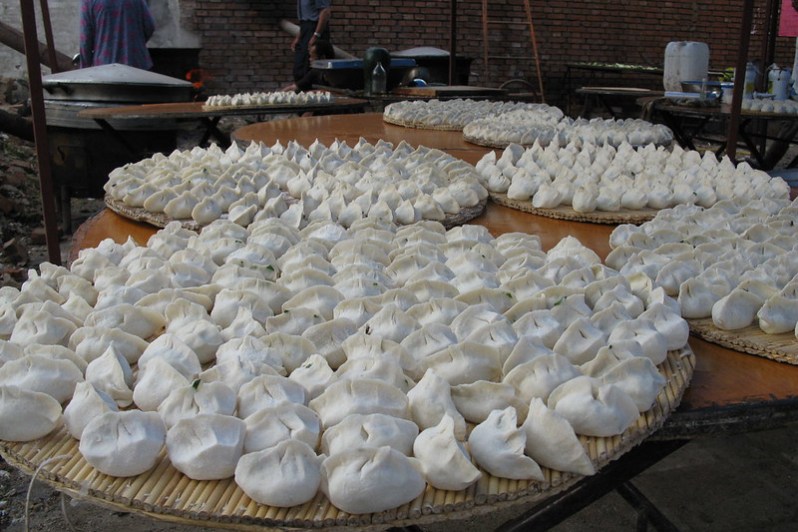
Resembling coin purses, dumplings are said to bring wealth and prosperity in Chinese culture.
Traditionally filled with a mixture of meat, tofu, egg, and/or vegetables, dumplings are a staple of Chinese cuisine and a must-have at every Lunar New Year table. While they can be boiled, steamed, pan or deep fried, we’ve yet to find a preparation that isn’t delicious.
Spring rolls
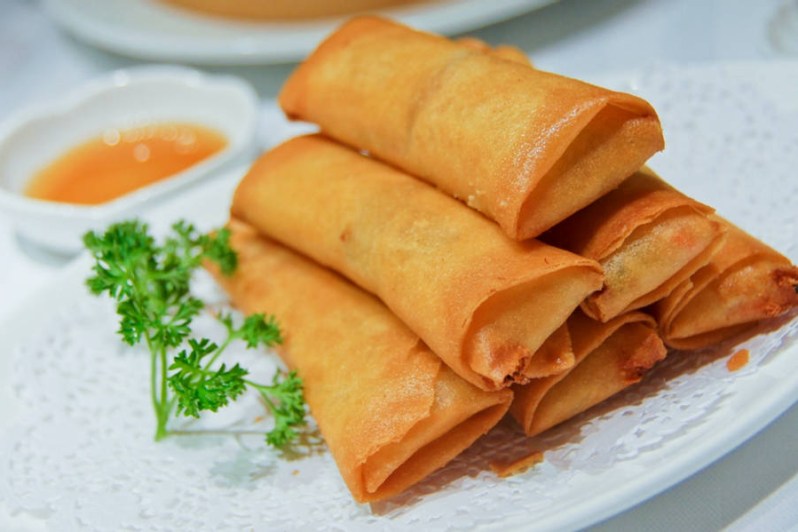
The crisp, golden shell of the fried egg roll symbolizes gold, and is meant to bring wealth and prosperity to those who eat them.
Spring rolls are so popular on Lunar New Year that their name actually comes from one of the holiday’s titles — The Spring Festival. These crisp little rolls are often a mixture of pork or shrimp, bean sprouts, cabbage and other vegetables that have been carefully rolled in a thin dough then fried to crispy perfection.
Tang Yuan
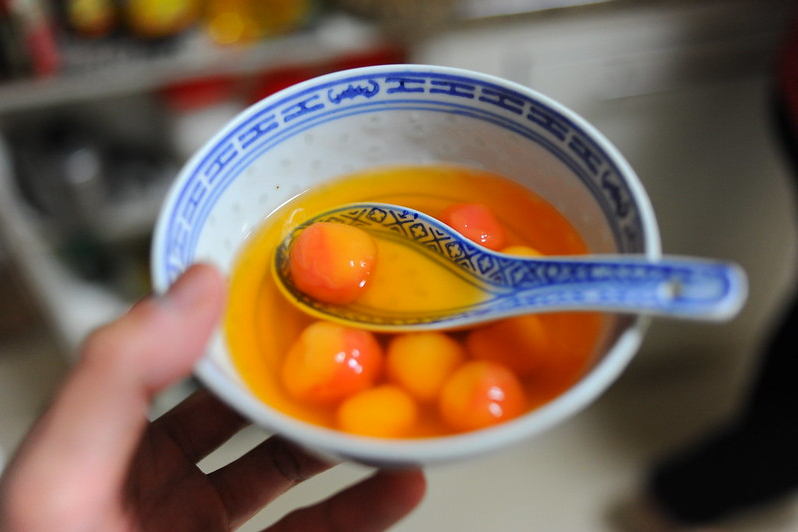
The shape and pronunciation of this traditional Chinese dessert symbolize unity, both with your romantic partner, and with your family. There is even a lucky saying that is traditionally expressed when eating this treat: “Tuántuán yuányuán,” which means, “Happy family reunion!”
These sweet little balls are made from rice flour and served warm in a pool of sweet ginger syrup.
Bamboo shoots

Bamboo shoots are a traditional Chinese dish and are commonly enjoyed on the holiday. They symbolize well wishes and wealth.
Bamboo shoots can be cooked in a variety of ways and are often prepared and served as a vegetable component in many dishes. Many people like to simply braise them and serve with soy sauce, or make a delicious bamboo shoot soup.
Fa Gao
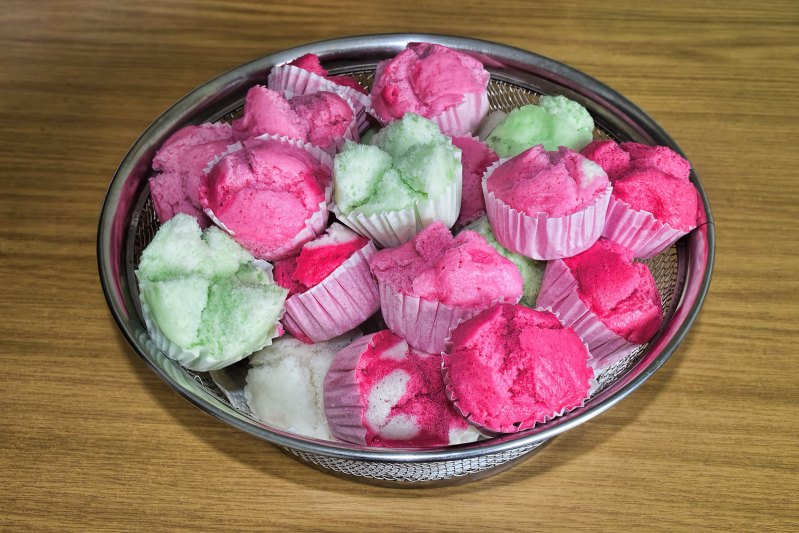
These colorful little cakes are meant to bring wealth and prosperity. It’s even said that the higher they rise in the baking process, the more wealth one can expect in the coming year.
The fa gao is a slightly sweetened steamed cake with a crackled top. Similar to cupcakes, these little treats are individually wrapped desserts and come in a wide variety of colors and flavors. Their symbolism is so strong, in fact, that they’re often referred to as “fortune cakes” or “prosperity cakes”.
Longevity noodles
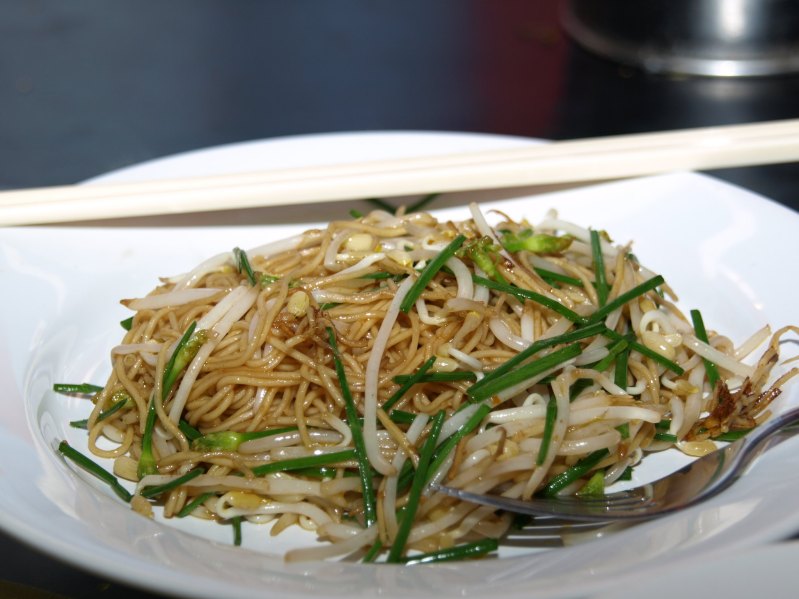
Longevity noodles, also called “Long Life Noodles” symbolize, clearly, a long, healthy life. According to tradition, the longer the noodle, the luckier that life will be. But take great caution not to accidentally break a noodle when cooking — that symbolizes a life that will be cut short!
Longevity noodles are long, thin, wheat flour noodles that have been cooked in broth. They are seasoned with soy sauce and served with vegetables.
Tray of Togetherness
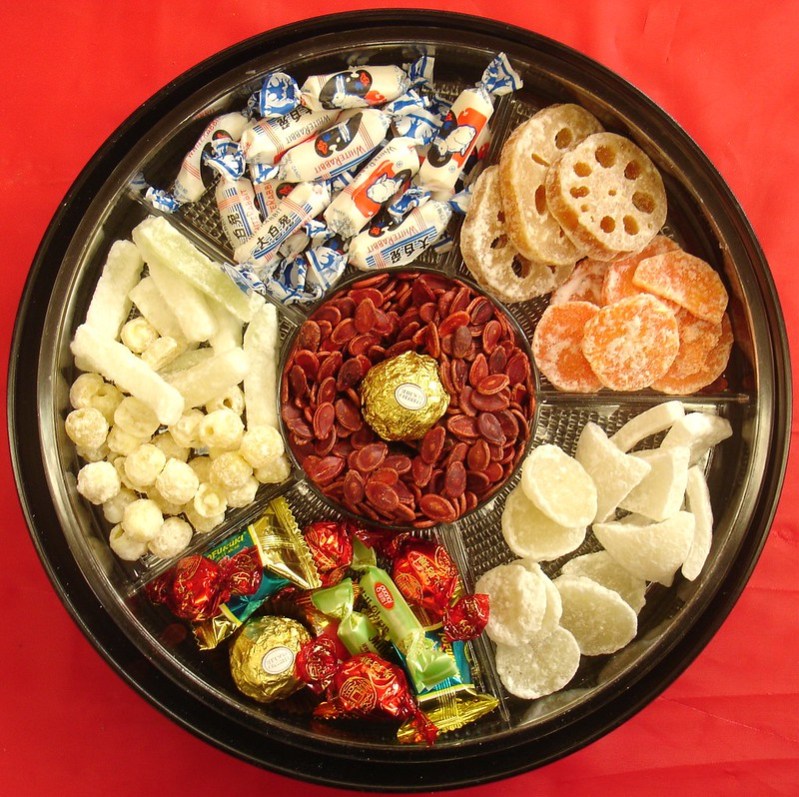
The tray of togetherness is a tray or box that is set out for visiting house guests during the time of Lunar New Year. This gesture of hospitality is not only a wonderful welcome gift, but also a representation of peace and family harmony. Usually, the tray will have either six or eight compartments to hold sweet treats like dried fruits and candy. In Chinese culture, the number six symbolizes luck, and eight represents fortune. The symbolism usually continues in the details of each selected treat within the tray.
If you ask us, the tray of togetherness seems to be the epitome of thoughtfulness.
Citrus fruits
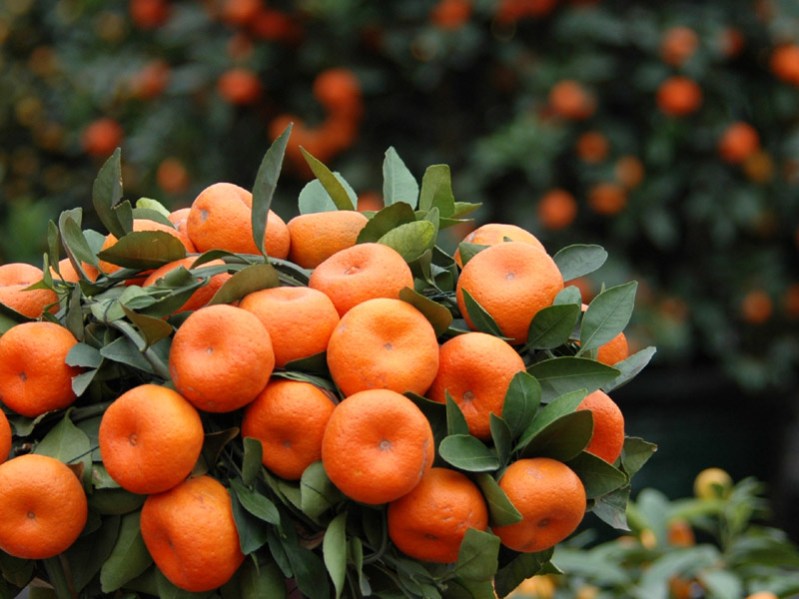
In Chinese, the words for orange and tangerine sound very similar to those for luck and wealth. Because of this, these fruits are said to bring happiness and good luck.
Orange as an ingredient is incorporated into countless traditional Chinese dishes, but the fruit itself is often given as a symbolic gift during the holiday.
Almond cookies
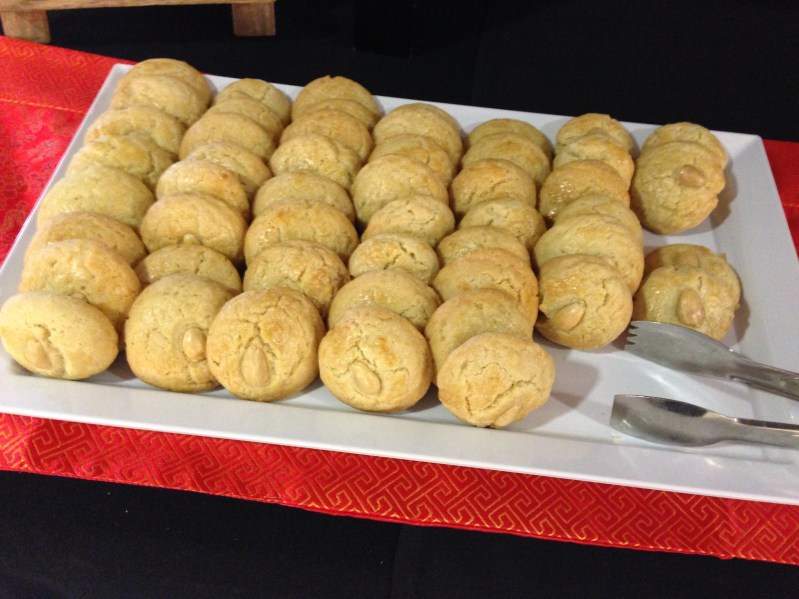
Shaped as both a coin and a moon, these delicious little cookies symbolize wealth and financial happiness in the coming year.
Traditionally made with ground mung bean and flavored with almonds, these sandy little treats are completely addicting, perfectly sweet, and one of our favorite Chinese New Year food traditions.
Fish

In Chinese, the word for “fish” (Yú) sounds like the word that means “abundance.” Because of this, eating fish for the Lunar New Year symbolizes a surplus of wealth at the end of the year.
For the festivities, this Chinese New Year food — usually carp — are most often steamed whole, or put into a stew.
Editors' Recommendations
- Rebel unveils its limited edition single barrel bourbon, aged for 10 years
- The ultimate guide to Thai food, one of the world’s most dynamic cuisines
- What to know about Hanwoo, the Wagyu beef of Korea
- NYC restaurant Mala Hot Pot teaches us about modern Chinese hot pot
- Cognac vs. brandy: What’s the difference?



